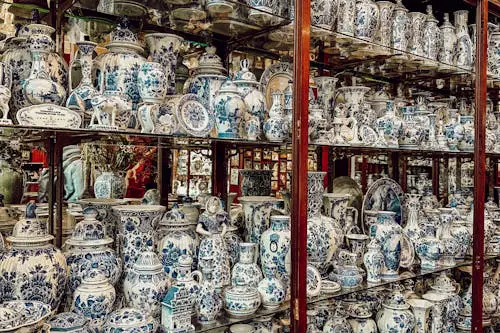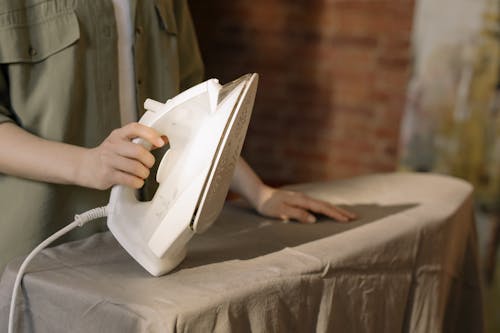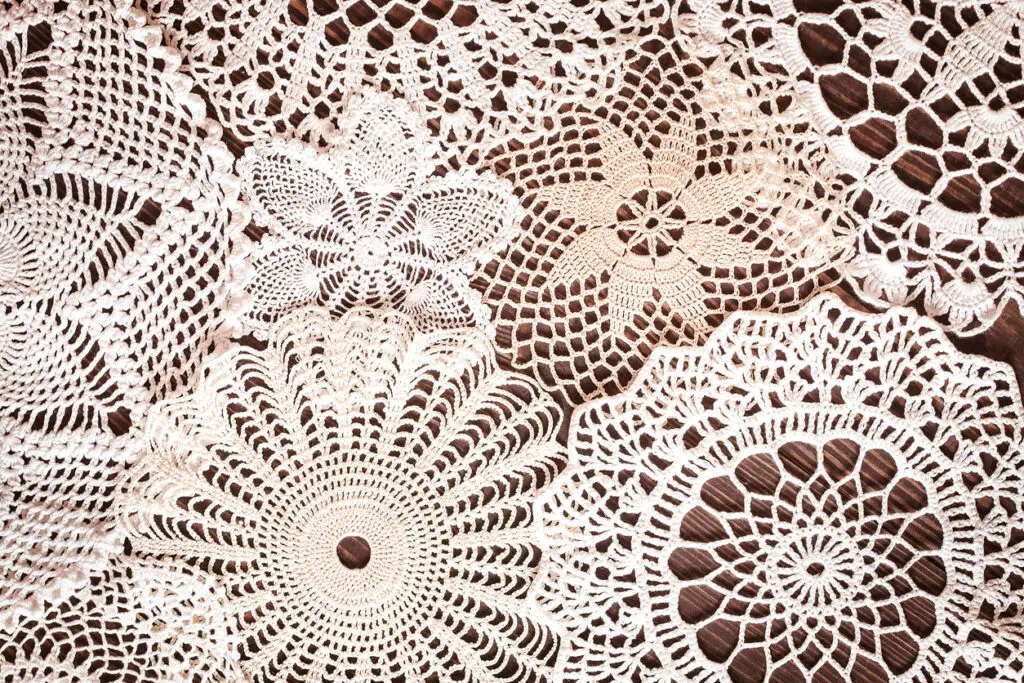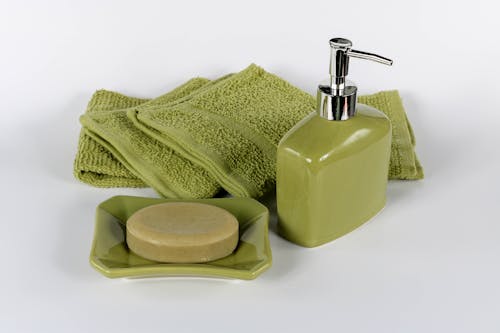1. Keeping a “China Cabinet” for Special Dishes

For a lot of older households, having a cabinet full of “good china” was a status symbol and meant you were ready for formal entertaining. These cabinets often displayed ornate dishes, crystal glasses, and silverware that rarely—if ever—got used. The idea was to show you had a set aside for holidays or guests, even if it collected dust most of the year.
Gen Z finds this baffling since most prefer minimalist living and everyday items that actually get used. They’re more likely to buy durable, affordable dishware from IKEA or Target and use it for everything. To them, having a set of plates you don’t eat on just feels impractical. It’s one of those traditions that reads as a sign of excess instead of hospitality.
2. Ironing Everything

There was a time when ironing wasn’t just for dress shirts—it was for bedsheets, pillowcases, and even tablecloths. Many households kept ironing boards permanently set up, and kids grew up learning how to “press” clothes to look polished. Wrinkles were seen as sloppy, and taking the time to smooth things out was part of daily life.
Today, Gen Z relies on wrinkle-resistant fabrics and clothes dryers to do the job. They view ironing as something you only do for weddings, job interviews, or the rare formal occasion. Some even joke that they don’t own an iron at all. To them, the ritual of ironing feels outdated and unnecessary for everyday life.
3. Displaying Plastic-Covered Furniture

Some households in the mid-to-late 20th century covered couches and chairs in plastic slipcovers. The reasoning was to keep expensive furniture from getting stained or worn down. The covers were uncomfortable and sticky in hot weather, but families saw them as a way of protecting their investment.
Gen Z can’t wrap their heads around the idea of buying something nice and then never actually enjoying it. They prefer furniture that’s lived-in, cozy, and often secondhand. Comfort and authenticity matter more than preservation. Plastic-covered furniture is now seen as the opposite of inviting.
4. Hanging Drying Racks in the Kitchen

Many older homes had racks in the kitchen specifically for drying reusable plastic bags or aluminum foil. Reuse was the norm, partly out of thrift and partly because disposable culture hadn’t taken over yet. Kids grew up watching their parents rinse out sandwich bags and hang them up to dry.
Gen Z, while environmentally aware, tends to buy reusable silicone bags or containers instead. They see reusing disposable bags as extra effort with a less sustainable payoff. The sight of plastic bags dangling around the kitchen strikes them as cluttered and unnecessary. For them, modern eco-conscious habits look very different.
5. Displaying a Telephone Table or Stand

The “telephone table” was a little piece of furniture dedicated to housing the landline phone. Families often placed it in a hallway or living room with a notepad and pen nearby. Calls were a household event, and people would sit down specifically to talk.
Gen Z grew up in a mobile-first world where phones are personal and portable. The idea of needing furniture for a single device feels foreign. Conversations happen on the go, not anchored to one spot in the house. A telephone table today looks more like an antique curiosity than a practical household item.
6. Keeping a Rolodex or Address Book

Before smartphones, households kept a Rolodex or paper address book for all important contacts. It wasn’t just names and numbers—sometimes birthdays, anniversaries, and notes were recorded there too. Families would update them by hand and flip through when making calls or sending cards.
Gen Z, raised with synced contacts and digital calendars, rarely uses paper for this kind of record-keeping. They store everything on their phone or in cloud accounts, where updates are automatic. Having to rewrite an entry feels inefficient when everything could just update itself. The Rolodex is a symbol of a slower, more analog era.
7. Using Fancy Doilies or Table Runners

Decorating with lace doilies or embroidered table runners was once common in living rooms and dining rooms. They were placed under lamps, vases, or figurines to add a “finished” touch. These small details were seen as part of maintaining a proper home.
For Gen Z, this type of décor feels fussy and outdated. They prefer clean surfaces and more modern aesthetics like minimalism or eclectic thrift finds. Instead of lace, they’d rather have a simple tray or nothing at all. Doilies now read as something out of a grandparent’s house, not a modern apartment.
8. Keeping Encyclopedias on the Shelf

Many households invested in full encyclopedia sets that lined bookshelves for years. They were expensive and prized because they represented access to knowledge before the internet. Kids would spend hours flipping through them for school projects.
Gen Z has only ever known instant access to information online. To them, encyclopedias are heavy, outdated, and inaccurate compared to the web. They’re often seen today as decorative items rather than sources of truth. The bookshelf encyclopedia set is now a relic of a pre-digital household.
9. Having a Formal Living Room “No One Uses”

Plenty of homes had a “front room” or formal living room set aside only for guests. Families weren’t allowed to lounge there casually—it was meant to look pristine for company. Furniture in these rooms often stayed spotless because they were barely touched.
Gen Z doesn’t see the point of a space you can’t actually live in. With smaller apartments and shared spaces, they value every room being functional. They’d rather invest in cozy furniture they can use daily. The idea of a decorative-only room feels like wasted square footage.
10. Saving Greeting Cards in a Drawer

Older generations often saved every birthday, holiday, and anniversary card they received. Drawers and shoeboxes full of greeting cards were common in many households. These collections were tied to sentimentality and keeping memories alive.
Gen Z, while not against keepsakes, often prefers digital forms of memory. Screenshots, photos, and even saved texts feel more practical to them. Physical cards are often recycled after a short while. To younger eyes, holding onto stacks of paper cards can feel like clutter.
11. Keeping a “Junk Drawer” for Odds and Ends

Most households still have some version of a junk drawer, but older generations leaned on them heavily. They’d be filled with rubber bands, expired coupons, keys that didn’t open anything, and takeout menus. It was the catch-all solution for “things we might need someday.”
Gen Z prefers more intentional organization systems, often influenced by minimalist or decluttering trends. Instead of one chaotic drawer, they might use bins, labels, or digital storage. They still have clutter, but they want it streamlined. The classic junk drawer feels like a sign of disorganization rather than resourcefulness.
12. Maintaining a Decorative Towel Set

Many households kept a set of fancy towels that were never to be used. These were often embroidered, monogrammed, or color-coordinated just for show. Kids grew up knowing which towels were “off-limits.”
Gen Z finds the concept funny and impractical. If you buy towels, why not use them? They prefer functional, quick-drying towels over decorative sets that just sit there. For them, towels are for drying off, not home décor.
This post 12 Household Traditions That Make Gen Z Think You’re Out of Touch was first published on Greenhouse Black.
